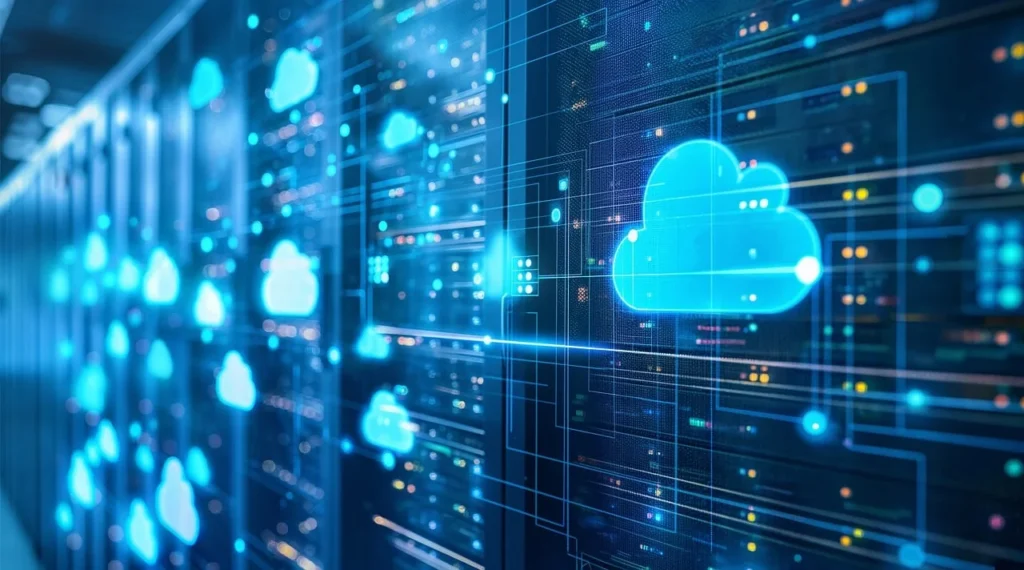Operational efficiency and sustainability are the two most essential goals for modern organizations. They help create a foundation for long-term growth and resilience. Operational efficiency also helps businesses cut expenses, increase production, and offer improved services. On the other hand, sustainability helps satisfy the current legislation demands and focuses on environmental problems.
However, there are several challenges involved in achieving these goals. These include rising operational costs, fragmented IT systems, and the need to minimize environmental impact. Cloud ecosystem orchestration can integrate diverse environments to provide the most efficient solutions for overcoming these challenges. Companies can leverage cloud orchestration, unify their operations, and adopt sustainable practices using cloud services while ensuring profitability.
Table of Contents
Understanding Cloud Ecosystem Orchestration
Cloud ecosystem orchestration refers to managing different workflows, services, and infrastructure across multiple cloud environments. It helps organizations deploy applications faster, scale resources, and optimize costs effectively. Cloud providers implement ecosystem orchestration through:
- Data Discovery and Assessment: Cloud solutions use a company’s IT resources to analyze their current resource utilization. These resources include servers, storage, and applications that help create a migration blueprint for various purposes.
- Strategized Planning: Businesses can use the same blueprint to align cloud adoption with business objectives and risk tolerance. Then, cloud computing consulting creates a detailed plan for smooth data migration, application reconfiguration, and infrastructure provisioning.
- Implementation: Automation can enhance all cloud transformation strategies by migrating applications and infrastructure. Integration between legacy systems and new cloud platforms can also be managed during this phase to ensure continuity.
- Optimization: Cloud computing solutions indulge in continuous monitoring to identify potential issues and optimize performance.
Several key components are also involved in the implementation of cloud ecosystem orchestration. These include:
- Infrastructure as Code (IaC): Treats infrastructure as code to enable automation and version control.
- Configuration Management: Tracks and manages software configurations to maintain consistency across environments
- Automation Tools: Automate repetitive tasks such as resource provisioning, scaling, and deployment to enhance efficiency and minimize errors.
- Container Orchestration: Facilitates the deployment, scaling, and management of containerized applications to ensure efficient resource utilization.
- Cloud-Native Technologies: Works with tools like serverless computing and microservices to help businesses fully leverage cloud environments.
How Does Cloud Ecosystem Orchestration Drives Operational Efficiency?
Cloud ecosystem orchestration centralizes the key processes of an organization. This way, it helps simplify resource management, enhance productivity, and minimize costly errors. Here’s how cloud services can help achieve operational efficiency through efficient orchestration:
- Resource Management
Cloud transformation strategy implements automation in various processes such as provisioning, scaling, and monitoring. This helps organizations eliminate manual intervention, reduce errors, and allocate human resources efficiently. Orchestration also enables businesses to make real-time resource adjustments based on current needs. This responsiveness ensures that businesses operate smoothly, without downtime or inefficiencies that may often disrupt productivity.
- Process Unification
Cloud computing solutions can consolidate management tools, interfaces, and cloud environments into a single platform. This unified approach allows businesses to oversee all cloud deployments, applications, and data to offer clear visibility and control. Such a simplified process reduces the complexity of IT teams in monitoring cloud performance and tracking resource usage. This is how cloud orchestration ensures smoother operations across any organization.
- Cost Optimization
Cost optimization is crucial for achieving operational efficiency. Cloud computing consulting helps organizations properly utilize resources and cut costs through proper orchestration. Businesses can optimize their IT infrastructure to balance workloads across multiple cloud environments and prevent resource bottlenecks.
Enhancing Sustainability with Cloud Orchestration
Cloud orchestration improves operational efficiency and helps organizations achieve sustainability. Businesses can also reduce energy consumption and lower their carbon footprint through optimized resource utilization. Here’s how cloud orchestration helps organizations meet environmental goals while maintaining scalable operations with cloud-native technologies and sustainable practices.
- Energy Efficiency
Cloud orchestration helps adjust the overprovisioning and underutilization of resources dynamically. It ensures that cloud environments run at peak efficiency based on demand to reduce energy consumption. For instance, orchestration will automatically scale down cloud resources during periods of lower demand. This helps reduce the usage of overall energy resources required to run systems.
- Carbon Footprint Reduction
Most cloud orchestration services allow companies to select data centers that use renewable energy and have sustainable policies. For instance, green data centers operate through solar, wind, or other sources of green power. Cloud orchestration also distributes workloads across multiple cloud environments. This helps minimize the environmental impact of running multiple systems simultaneously.
- Lifecycle Management
Cloud computing solutions ensure sustainable management of IT resources throughout their lifecycle. Orchestration platforms can help businesses keep track of the lifespan of their cloud resources. It allows them to make better decisions about specific upgrades or replacements to ensure maximum efficiency and sustainability.
Bottom Line
Operational efficiency and environmental responsibility are paramount in the present context. The cloud ecosystem orchestration approach gives a significant edge to achieving this requirement. It helps businesses manage their available resources to optimize costs, simplify IT operations, and reduce energy consumption.
Cloud orchestration can offer greater insights to businesses that are trying to transform how they traditionally operate. It can boost their security, cost efficiency, and workforce agility to help them stay competitive. This structured approach helps businesses remain agile in a competitive market while demonstrating a commitment to sustainability.

